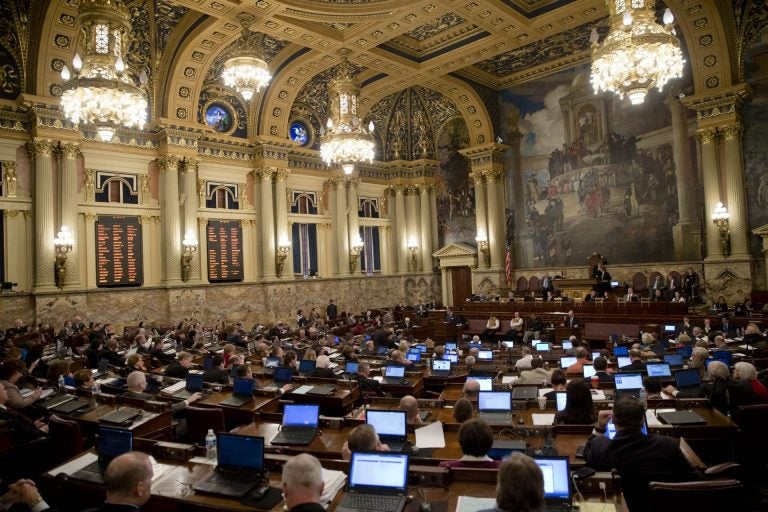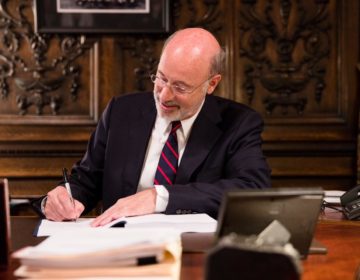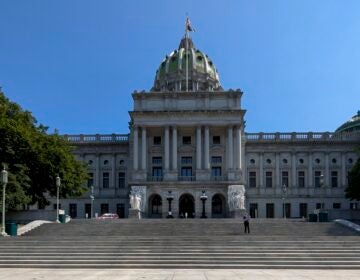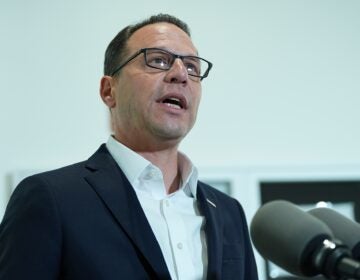Pa. taxpayers foot bill to supply legislators, army of aides
An AP review of more than 6,000 pages of 2019 spending line items found lawmakers often use the latitude their own rules provide to decide what to buy and from whom.

Pennsylvania House of Representatives at the state Capitol in Harrisburg, Pa. (Matt Rourke/AP Photo, file)
It takes hundreds of millions of taxpayer dollars a year for the Pennsylvania General Assembly to maintain one of the country’s largest legislative staffs, a small army that needs food, shelter, transportation, office supplies and modern electronics.
An Associated Press review of invoices and more than 6,000 pages of spending line items by the state’s legislative branch last year found lawmakers often use the latitude their own rules provide to decide what to buy and from whom.
There are limits: Expenditures must somehow relate to legislative business, and each member has an annual spending cap. The Senate does some group purchasing, including for office supplies.
Lawmakers spent public money to flavor their office water, buy fancy furniture, have locks changed and reserve choice parking spots.
They purchased a teach-yourself-Spanish program, $374; rented a zoo for a community event, $1,500; bought fastnachts, a Mardi Gras doughnut, $23; ordered a personalized tablecloth, $260; and picked up some individually wrapped muffins to pass out to commuters at a train station, $80.
One state representative dinged taxpayers for a $1.08 container of hairspray so she could kill flies.
They went through a vast amount of food and drink, often for community events or for groups visiting the Capitol, with costs that sometimes ran in the hundreds, even thousands of dollars.
To decorate their own offices, lawmakers can order up government-paid custom framing, sometimes to display pictures of themselves. The AP review found about half the 203-member House ordered framing last year.
During his final week in office in November 2018, before he retired after 26 years, state Rep. Bill Keller went on a framing spree, including five photos of himself on the House floor and two of himself holding what were described in the invoice as Pennsylvania trophies.
When questioned about it, Keller, a Philadelphia Democrat, immediately said he would repay the money, and a House official said a $2,200 check arrived Friday.
Lawmakers’ names are plastered on their Capitol office doors and on the district office buildings found throughout the state.
The Legislature spent more than $50,000 on signs in 2018-19. The costs varied widely, as did the type of sign — from a humble door marker to a large outdoor display with the legislator’s name illuminated.
Rep. Steve Malagari, a Democrat from Lansdale, hired a sign business on his block to fabricate a main exterior sign, a brushed aluminum “suite marker,” a vinyl sign for the front window and a 2-foot-by-3-foot sandwich board to catch pedestrians. The cost was nearly $1,300.
Hal Good, a national expert in government procurement, said the House should reexamine purchasing rules that let state representatives buy district office supplies and other commonly used items on their own. There are office supply vendors, for example, that can deliver directly.
“If it was a group decision to simply do it more efficiently and spend the dollars saved in another way, I think it would be a huge benefit for everyone involved,” said Good, retired after a career in public- and private-sector procurement.
In early February, the AP requested details of spending, zeroing in on accounting categories contained in the General Assembly’s report about its own annual budget, which has grown to $362 million, up from $318 million a decade ago.
The lion’s share of the Legislature’s costs is easily its $299 million in payroll and benefits.
There are about 300 district offices in the House and 97 leased district offices and 122 satellite district offices in the Senate.
Legislative records document in detail the cost of maintaining its roughly 2,200 employees and the statewide network of offices, from mundane needs such as bathroom supplies and coffee to flags, brochure racks and security services.
Shredding paper has become a particular interest. Those public shredding events, often advertised as free, cost taxpayers more than $44,000 in 2018-19, with lawmakers hiring vendors to do the work.
Members’ marble-and-gold-leaf state Capitol offices are filled with high-end furniture, and the spending records show how making their workspace even nicer remains a work in progress.
The Senate made numerous furniture purchases through the clerk’s office last year that included a solid brass table lamp, $440; a pair of 7-foot-wide (2-meter-wide) desks, $7,800; and a set of six executive swivel chairs, $6,600. One senator billed taxpayers $82 for a side table, noting it was to display his Senate photos and awards.
The Senate clerk also dropped $35,000 on four museum-quality display cases for its ornate library. Since put to work to highlight the chamber’s history, they are currently featured in a new exhibit, “Treasures of the Senate.”
WHYY is your source for fact-based, in-depth journalism and information. As a nonprofit organization, we rely on financial support from readers like you. Please give today.






